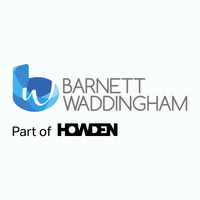Who’s checking organisational health? Why a joined-up approach is key

These debacles not only affect the livelihoods of the large number of a company’s own employees, but also have a knock-on effect for the future of any suppliers and subcontractors, their employees, and anyone else they owe money to.
Since Christmas, the continuing competition and challenge on the high street has led to a number of retailers declaring revenue and profit warnings, looking to reduce their rental liabilities, or planning to close underperforming stores.
Shares in one national retailer dropped by 15% as a result of poor Christmas trading. In the coming weeks and months we will probably see other companies in other sectors suffering similar problems.
When a high-profile business fails, there are no shortage of external industry experts commenting on the reasons for this, and what the business should have done differently. It may be overly simplistic to ask, but it begs the question of why leaders in that business did not know or understand what their problems were, and - if they did - why they let things get to the point of no return.
Many businesses suffer common problems like aggressive competition and pricing, failure to respond to changes in customer behaviour, lack of investment in technology or poor contract procurement and management. This reinforces the importance of being aware of and prioritising risk based on potential impact, and how the risk will be mitigated against.
Companies can only do this if they can measure and report on their organisational health from a business, customer, financial and people perspective. It is hard to understand why many senior management and operating boards are not insisting on having full management information reporting on their meeting agendas to understand the performance, strength and strain of their model. This shifts the conversation from one of “we think” or “we believe” to one of “we know”; a much more powerful position to be in.
The key role of HR
HR can play a key role here by providing the people perspective. This has to extend beyond employee opinion and into employee and organisational health and performance - demonstrating that an organisation’s people strategy, proposition and practices are driving real value and efficiency, as well as fully aligned to the business strategy and plan.
The reality is that HR leaders probably have access to more critical people metrics than they think, but for a variety of reasons are not using them in a way that links to wider financial metrics and business performance - which is what resonates most with senior leaders. It is vital that HR and finance departments need to be firm friends so that together they can show the health of the business, the value of people (as well as the cost) and the return from investing in them.
Peter Meyler is head of workplace consultancy at Barnett Waddingham.
This article was provided by Barnett Waddingham.
Supplied by REBA Associate Member, Barnett Waddingham
Barnett Waddingham is proud to be a leading independent UK professional services consultancy at the forefront of risk, pensions, investment, and insurance. We work to deliver on our promise to ensure the highest levels of trust, integrity and quality through our purpose and behaviours.







